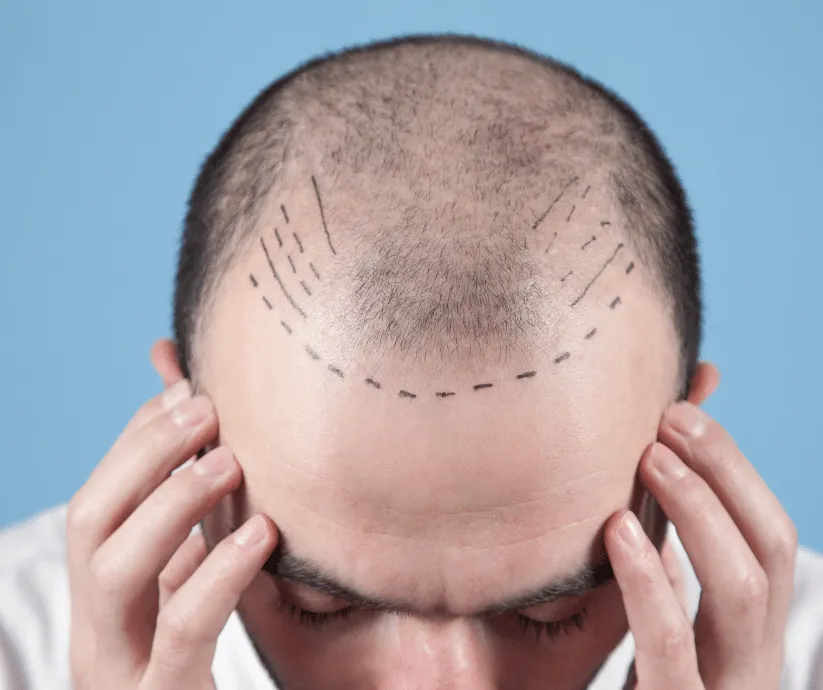
Hair transplant is a medical procedure used to treat hair loss. It involves taking hair from a part of the body where hair is growing and transplanting it to an area with thin or no hair. This treatment is often chosen by people who are experiencing baldness or thinning Hair transplant . It can help restore confidence and improve appearance.
Why Hair Transplant is Done
Hair loss is a common issue among both men and women. It can be caused by genetics, aging, hormonal changes, or medical conditions. A hair transplant is usually considered when other treatments like medicines or natural remedies fail to show results. It is mostly used for pattern baldness, which is a genetic condition that affects millions of people.
Types of Hair Transplant
There are two main techniques used in hair transplant:
-
FUT (Follicular Unit Transplantation)
In this method, a strip of scalp is removed from the donor area, usually the back of the head. Hair follicles are separated from this strip and then transplanted to the bald area. This method can leave a linear scar but allows transplanting a large number of hair in one session. -
FUE (Follicular Unit Extraction)
In this technique, individual hair follicles are removed directly from the donor area and transplanted one by one to the bald region. FUE does not leave a large scar and has a shorter recovery time compared to FUT.
Ideal Candidates for Hair Transplant
Not everyone is suitable for a hair transplant. The best candidates are:
-
People with male or female pattern baldness
-
Those who have lost hair due to injury or burn
-
Individuals with a stable donor area
-
People who are healthy and have no serious health problems
A consultation with a specialist is important to assess whether someone is a good candidate for the procedure.
Hair Transplant Procedure Step-by-Step
-
Preparation
The scalp is cleaned, and local anesthesia is applied. Depending on the method used, either a strip of scalp is removed (FUT), or individual follicles are extracted (FUE). -
Harvesting Hair Follicles
The hair is removed from the donor area carefully to preserve the roots. In FUT, it is done from a strip. In FUE, it is done one by one using a small punch tool. -
Creating Recipient Sites
Tiny holes or slits are made in the bald area where the new hair will be placed. -
Transplantation
Hair follicles are placed into the created slits carefully, maintaining the natural direction and angle of hair growth. -
Post Procedure Care
After the procedure, the scalp may be swollen or sore. Medicines may be prescribed for pain, swelling, and infection prevention.
Benefits of Hair Transplant
-
Permanent Solution
It offers a long-term or permanent solution for hair loss. -
Natural Appearance
The results look natural because your own hair is used. -
Low Maintenance
Transplanted hair needs no special care. It grows like natural hair. -
Boosts Confidence
Improved hair volume and hairline can enhance self-esteem.
Risks and Side Effects
Like any medical procedure, a hair transplant also has some risks. Common side effects include:
-
Swelling of the scalp
-
Bruising around the eyes
-
Infection at the surgery site
-
Temporary loss of transplanted hair
-
Unnatural-looking hair if not done properly
These effects are usually temporary and go away within a few weeks. Choosing a qualified and experienced doctor reduces the risks.
Hair Transplant Recovery
Recovery time can vary depending on the technique used and the individual’s healing ability. Most people can return to work within a week. Crusts may form around the transplanted hair, and they fall off within 7 to 10 days. New hair starts growing after 3 to 4 months and continues to grow over the next year.
During the recovery:
-
Avoid touching or scratching the scalp
-
Do not expose the scalp to direct sunlight
-
Avoid heavy exercise for a few weeks
-
Follow all post-surgery instructions given by the doctor
Results After Hair Transplant
Results are not instant. The newly transplanted hair falls out within a few weeks after surgery, which is normal. New growth begins in about 3 months. Significant improvement can be seen in 6 to 9 months. Full results are usually visible in 12 to 18 months. The new hair continues to grow naturally and can be styled as desired.
Cost of Hair Transplant
The cost varies depending on several factors such as:
-
Number of grafts needed
-
Clinic location and reputation
-
Technique used (FUT or FUE)
-
Experience of the surgeon
Hair transplant is usually considered a cosmetic procedure, so most health insurance plans do not cover it.
Things to Consider Before Getting a Hair Transplant
Before deciding on a hair transplant, it is important to:
-
Have realistic expectations
-
Understand the procedure and its risks
-
Choose a qualified and experienced surgeon
-
Know the total cost, including aftercare
-
Be patient for the final results
Conclusion
Hair transplant is a safe and effective solution for people struggling with hair loss. With modern techniques like FUE and FUT, the procedure offers natural and long-lasting results. While the process takes time and involves recovery, the benefits in terms of improved appearance and confidence make it worthwhile for many. Before going ahead, it is important to gather complete information and consult a specialist to make the best decision for your hair and health.
Comments on “Hair Transplant Procedure, Benefits, Risks, and Recovery Guide”